Advanced High Strength Steels (AHSS), ≥ 550 MPa TS: Advanced high strength steels (AHSS) usually refer to steel types that are strengthened through phase transformation, and the structure contains martensite, bainite and/or residual Austenite. Including duplex steel, TRIP steel, composite steel and martensitic steel, etc. The strength and plasticity of advanced high-strength steel are far superior to ordinary high-strength steel. The combination of high strength and high formability makes it widely used in construction, offshore platforms, mechanical lifting, footbridges, foundation engineering, etc.
In this area, quenched and tempered (Q&T) and thermo-mechanically rolled high-strength products are most popular.
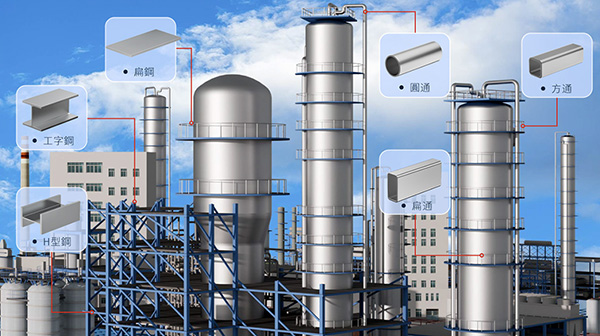
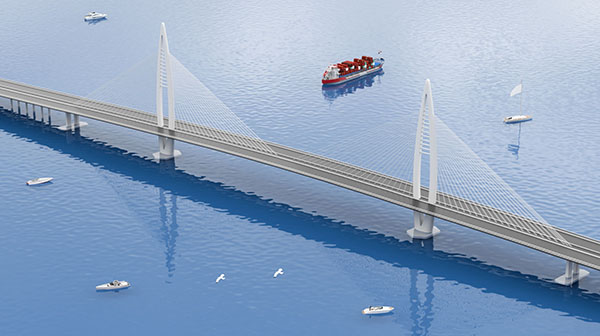
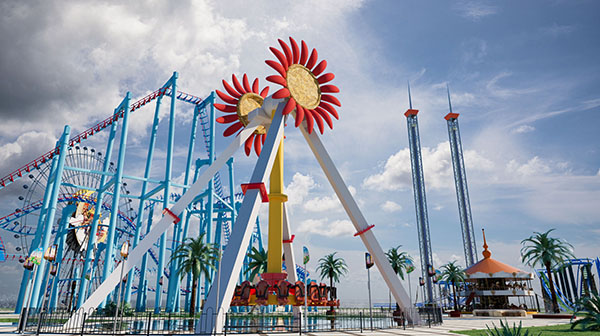
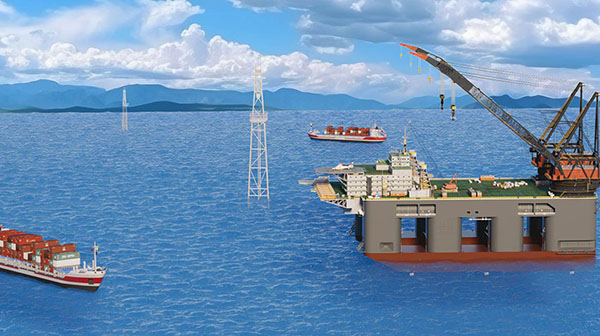
- Reduce the weight of products and structures while maintaining strength properties
- Increased payload capacity
- Reduce transportation, assembly and installation costs
- Reduce repair and maintenance costs
- Comprehensive wear resistance, crack resistance and deformation resistance
Due to the properties mentioned above, high-strength steel delivered in the quenched and tempered condition is widely used in heavy engineering, construction and other industries. Heavy-duty above-ground, underground and hoisting machinery manufacturing accounts for more than 70% of quenched steel plate consumption.
| Application of high strength quenched and tempered steel | Applications |
|---|---|
| Heavy ground machinery manufacturing | Excavator buckets and other accessories Dump truck body Asphalt machine flat plate grader blades |
| Heavy ground machinery manufacturing | Excavator buckets and other accessories Dump truck body Asphalt machine flat plate grader blades |
| Underground machinery manufacturing | Conveyor connection parts Reinforcement of load-bearing components of mining machinery Mining equipment accessories |
| Lifting equipment manufacturing | Port crane clamshell type Bridge crane load layering components Heavy machine boom, etc. |
| mining | Receiver box and screen Surge tanks and vibrating feeders cone crusher |
| Heavy and general machinery manufacturing | Concrete plant equipment wearing parts Plate and gravel feeding tank for concrete mixer Linings for buckets and bodies of rail cars and wheeled equipment Consumable parts for machines and equipment |
| put up | Offshore platform load-bearing components Elements of wind turbine towers Bridge and trestle elements |
| Repair and delivery | Refurbishment of individual wear parts of the above equipment at the end customer’s premises or in a specialized repair workshop |
High-strength steel can significantly extend the service life of equipment and machinery, reduce the frequency of machine replacement and repair, and reduce downtime.
The advantages of thermomechanically rolled products come from their key properties such as low carbon equivalent, high strength and high impact toughness. Compared with conventional steel, TMСР rolled products show greater efficiency during processing: reduced costs for welding consumables, no preheating of the steel and additional heat treatment, reduced overall steel strength of the structure, shortened project implementation time.
High strength steel is mainly used in construction and different engineering industries.
The use of high-strength thermo-mechanically rolled steel instead of ordinary structural steel greatly reduces the steel strength of civil structures due to the use of columns with thinner walls and flanges, but the compressive strength properties are the same. For example, using TMCP boards to make welded columns of modern commercial high-rise buildings can save 20-30% of steel. When used in an open truck structure, TMCP panels reduce its weight by 30-35% (and correspondingly increase its payload capacity).
High-strength steel delivered in the quenched and tempered condition is manufactured in accordance with EN 10025-6, DSTU EN 10025-6, ASTM A514/А514М, ASTM A517/А517М, GOST 19281, etc., as well as the manufacturer’s internal regulations.
| standard | High strength steel | Approximate levels of mechanical properties according to standards | |
|---|---|---|---|
| Yield strength, MPa | Tensile strength, MPa | ||
| EN 10025-6 DSTU EN 10025-6 |
S460Q, S460QL, S460QL1 | Not less than 460 | 550-720 |
| S500Q、S500QL、S500QL1 | Not less than 500 | 590-770 | |
| S550Q、S550QL、S550QL1 | Not less than 550 | 640-820 | |
| S620Q、S620QL、S620QL1 | Not less than 620 | 700-890 | |
| S690Q、S690QL、S690QL1 | Not less than 690 | 770-940 | |
| S890Q、S890QL、S890QL1 | Not less than 890 | 940-1100 | |
| S960Q、S960QL | Not less than 960 | 980-1150 | |
| ASTM A514/A514M | A514-B MT | 620-690 | 690-895 |
| A514-Q MT | 620-690 | 690-895 | |
| A514-H MT | 620-690 | 690-895 | |
| A514-F MT | 620-690 | 690-895 | |
| A514-E MT | 620-690 | 690-895 | |
| A517-F | 620-690 | 725-930 | |
| A517-B | 620-690 | 725-930 | |
| A517-Q | 620-690 | 725-930 | |
| ASTM A537/A537M | A537,Category 2,3 | 380-415 | 550-690 |
| GOST 6713 | 10HSND | Not less than 390 | 530-685 |
| 15HSND | Not less than 345 | 490-685 | |
| GOST 19281 | 10HSND | Not less than 390 | Not less than 510 |
| 15HSND | Not less than 345 | Not less than 490 | |
| 09G2S | Not less than 350 | Not less than 500 | |
| 16G2AF | Not less than 450 | Not less than 600 | |
| Spec. 14-1-5334-96 | 16HGMFTR | Not less than 580 | Not less than 680 |
| Spec. 14-1-5517-2005 | 16H2GSB | 590-835 | 690-930 |
| Spec. U 77-096-173-2001 | 25HGSR | Not less than 620 | Not less than 800 |
| Spec. U 27.1-26416904-150:2005 | 06G2B | Not less than 440 | Not less than 540 |
| 06GB | Not less than 355 | Not less than 450 | |
High-strength steels delivered in thermomechanically rolled conditions are manufactured in accordance with EN 10025-4, DSTU EN 10025-4 and EN 10149-2 and other regulatory documents and under the manufacturer’s own brand.
| standard | High strength steel | Approximate levels of mechanical properties according to standards | |
|---|---|---|---|
| Minimum yield strength, MPa | Tensile strength, MPa | ||
| EN 10149-2 | S315MC | 315 | 390-510 |
| S355MC | 355 | 430-550 | |
| S420MC | 420 | 480-620 | |
| S460MC | 460 | 520-670 | |
| S500MC | 500 | 550-700 | |
| S550MC | 550 | 600-760 | |
| S600MC | 600 | 650-820 | |
| S650MC | 650 | 700-880 | |
| S700MC | 700 | 750-950 | |
| S900MC | 900 | 930-1200 | |
| S960MC | 960 | 980-1250 | |
| EN 10025-4, DSTU EN 10025-4 |
S275M, S275ML | 275 | 370-530 |
| S355M, S355ML | 355 | 470-630 | |
| S420M, S420ML | 420 | 520-680 | |
| S460M, S460ML | 460 | 540-720 | |
High-strength steel is produced in reversing rolling mills by hot deformation of semi-finished steel such as cast or rolled slabs. The plates are strengthened during the final stages of rolling and cooling in the rolling mill or by off-line heat treatment.
| Quenched and Tempered (Q&T) High Strength Steel | thermomechanical rolling high strength steel |
|
|---|---|---|
| Technology and performance | Offline heat treatment or direct quenching Improve the wear resistance of rolled products Comprehensive wear resistance, crack resistance and deformation resistance |
Special online rolling conditions Low carbon equivalent High strength and impact toughness |
| Benefits to consumers | Reduce weight while maintaining strength properties Increased payload capacity Reduce material input |
Reduce welding time and costs No additional heat treatment required Steel mills are lighter compared to conventional steel grades Cold forming possibilities |
Quenching is the heating of steel above the phase transformation temperature followed by rapid cooling (in water, oil, polymer or ether mixtures, etc.) at a rate above the critical speed. The heating temperature and cooling medium are selected according to the chemical composition of the steel and the required structural conditions. After quenching, steel acquires a non-equilibrium metastable structure with high strength (up to 2500 MPa), hardness (up to 600-650 Vickers), wear resistance and brittleness. Quenching can involve specifically heating the steel after rolling or using the heat of rolling (called direct quenching).
Thermo-mechanically controlled processes (rolling; TMCP) require careful control of sheet temperature and deformation during rolling. The properties obtained after TMCP cannot be achieved by normalizing or other types of heat treatments. The final fine-grained microstructure of the steel is obtained by microalloying, rolling within a temperature range and controlled cooling (as well as accelerated cooling using an air-water mixture).
Due to their high strength, weldability and resistance to embrittlement, TMCP steel products can be used in structures with operating temperatures up to -50°C and guaranteed impact strength values.
-
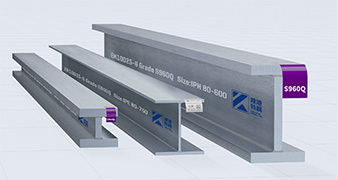 2024-7-19 Innovative Application of S960Q/S960QL/S960QL1 Structure steel
2024-7-19 Innovative Application of S960Q/S960QL/S960QL1 Structure steel -
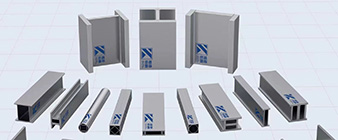 2024-9-16 316 Stainless Steel Performance Introduction
2024-9-16 316 Stainless Steel Performance Introduction -
 2024-9-21 S690 Universal Bearing Piles in civil engineering of Application
2024-9-21 S690 Universal Bearing Piles in civil engineering of Application -
 2024-9-29 Nickel Alloy C4 / 2.4610 Nickel alloy structural profiles for beams and columns
2024-9-29 Nickel Alloy C4 / 2.4610 Nickel alloy structural profiles for beams and columns -
 2024-9-24 310S stainless steel hollow structural Sections
2024-9-24 310S stainless steel hollow structural Sections -
2024-1-10 Stainless Steel – Austenitic – 1.4404 (316L) Bar and structural Section
-
 2024-9-15 High-Performance Weathering Steel Structures: A Comprehensive Overview
2024-9-15 High-Performance Weathering Steel Structures: A Comprehensive Overview



